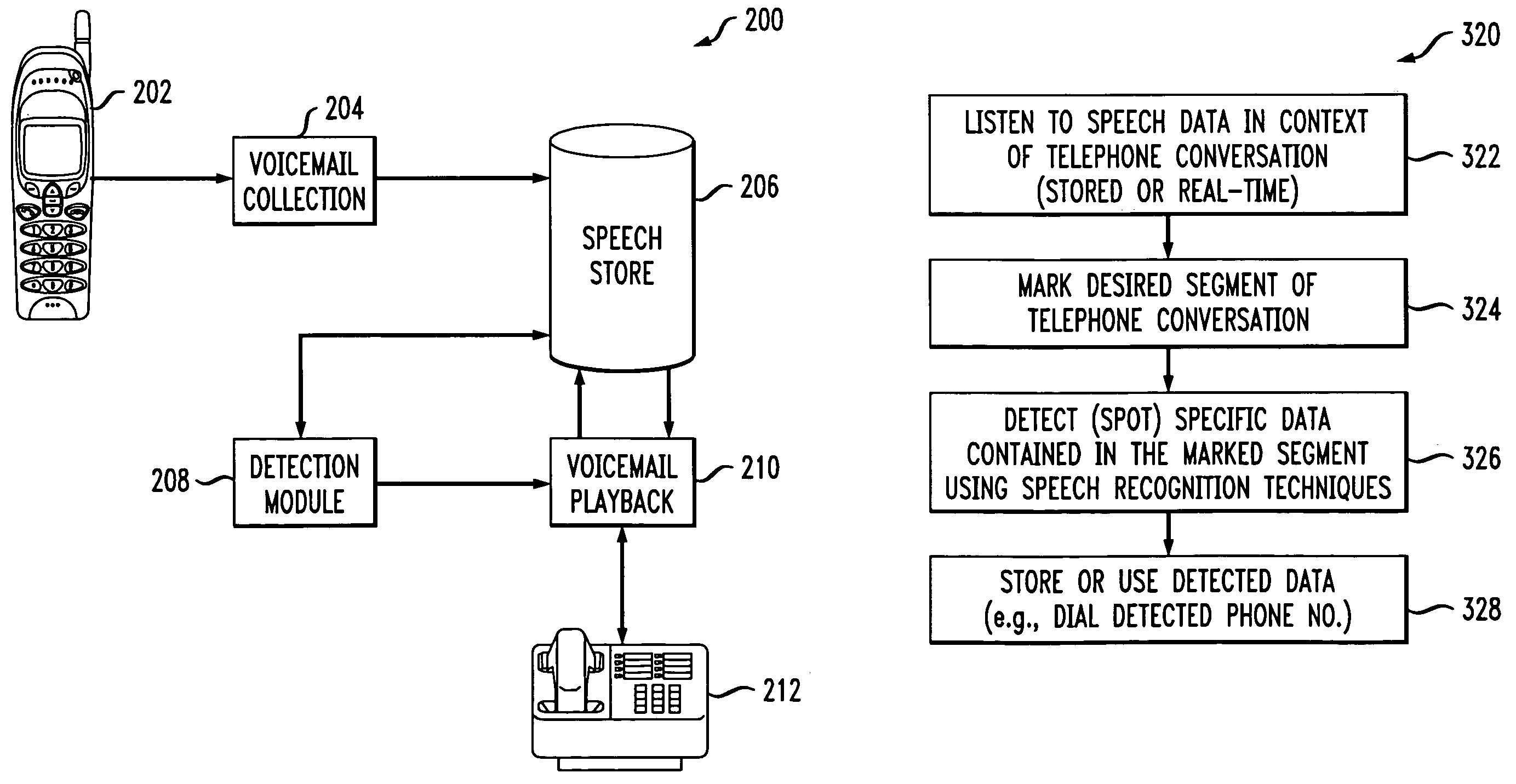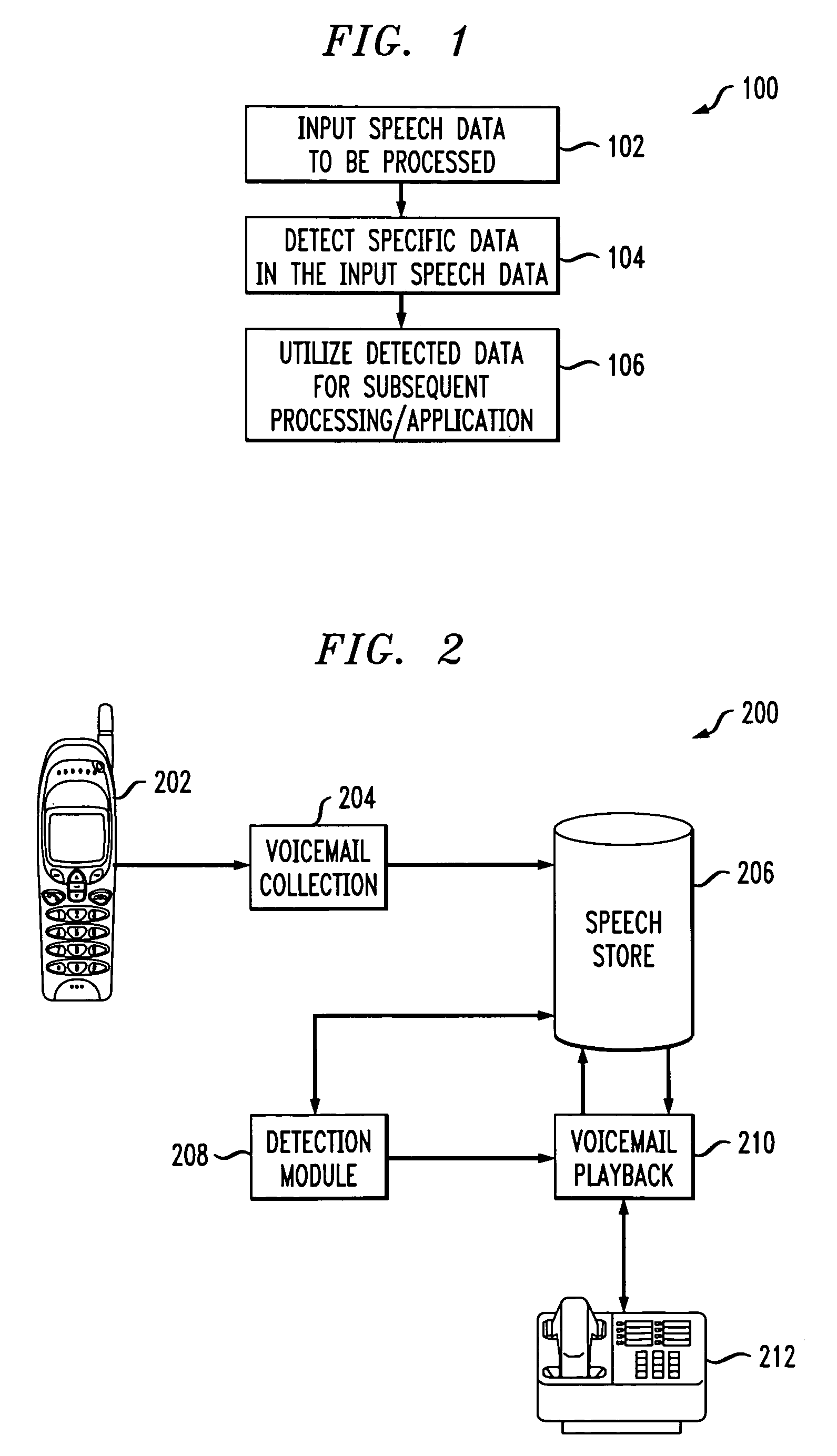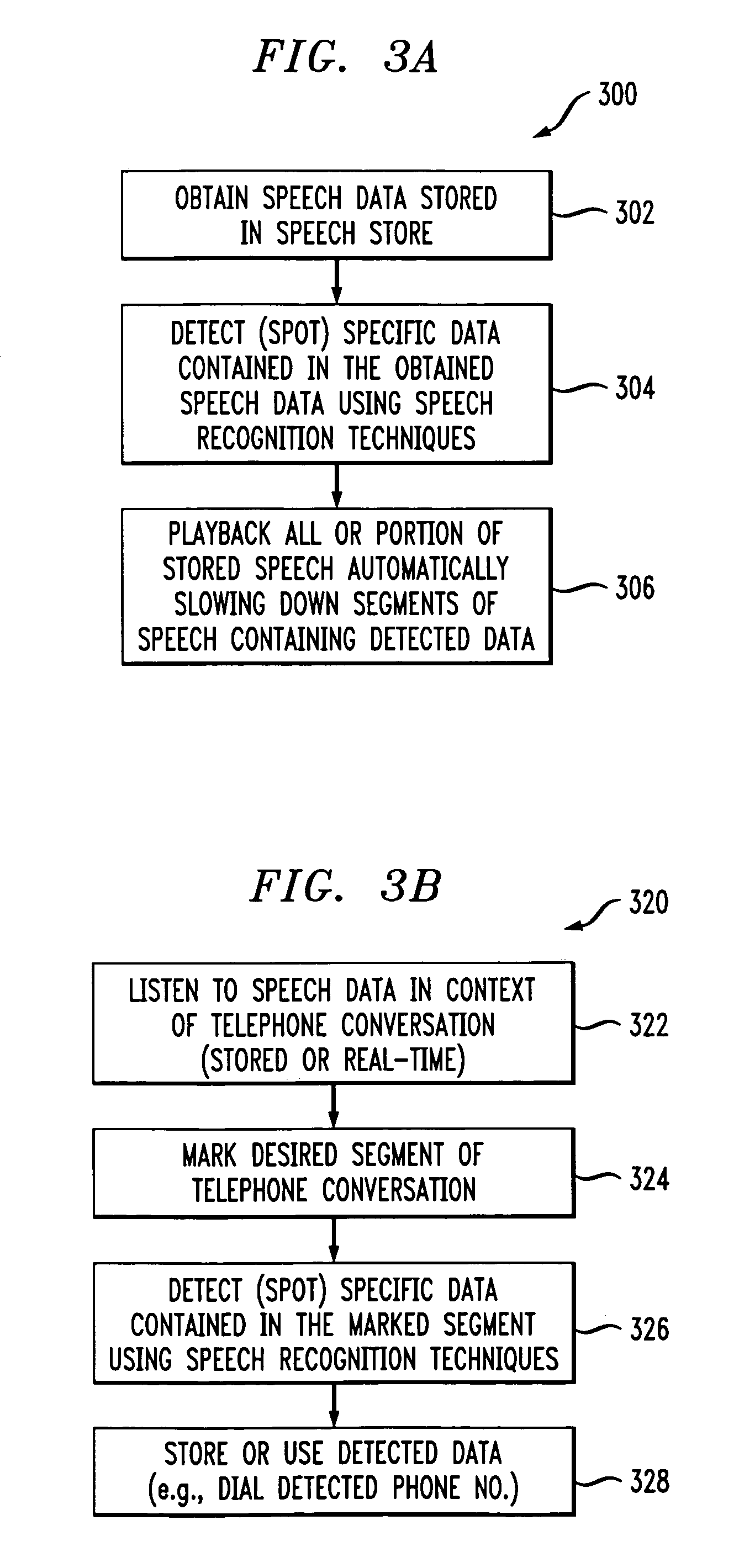Method and apparatus for processing information signals based on content
a technology of information signal and content, applied in the field of information signal processing techniques, can solve the problems of difficult for a user to effectively extract key information, insufficient time for listening to the message, time-consuming, etc., and achieve the effect of reducing and/or eliminating the classical ui problem
- Summary
- Abstract
- Description
- Claims
- Application Information
AI Technical Summary
Benefits of technology
Problems solved by technology
Method used
Image
Examples
first embodiment
[0039]Referring now to FIG. 3A, a flow diagram is shown illustrating a speech signal processing methodology according to the present invention. The method 300 will be explained with reference to the elements of FIG. 2. It is assumed that a caller using phone 202 leaves a voice message intended for a person associated with phone 212. The voicemail is collected by voicemail collection module 204. The voicemail collection module may, for example, be part of an independent voicemail messaging system that is part of a company's or carrier's overall telephone system. Alternatively, the module 204 may be part of the computer system that implements the speech store 206, the content detection module 208 and the voicemail playback module 210. In any case, the voice message is collected and then stored in speech store 206. Again, the system components associated with the present invention can be feature-local to the handset or reside on the voicemail box in the user's office / home or in the voi...
second embodiment
[0045]Referring now to FIG. 3B, a flow diagram is shown illustrating a speech signal processing methodology according to the present invention. Again, the method 320 will be explained with reference to the elements of FIG. 2. In this second illustrative embodiment, the listener at phone 212 listens to speech data associated with the a voice message stored in store 206 or speech data associated with a real-time telephone conversation being conducted with a person on phone 202 (step 322). Then, the listener at phone 212 marks a desired segment of the telephone conversation (step 324). Segment marking may be accomplished by the listener pressing preselected keys at the phone keypad. These keypad entries are associated with predetermined commands that the system has been programmed to recognize and respond to. Of course, spoken commands may also be programmed into the system. In the case when the listener is playing back a voicemail message, the listener can either mark a segment in ant...
third embodiment
[0051]Referring now to FIG. 5, a flow diagram depicts a speech signal processing methodology according to the present invention. Specifically, the method 500 is preferably implemented in the system 400 of FIG. 4, and thus will be described with reference thereto.
[0052]First, the cellular phone receives a speech signal associated with a wireless phone call and transcodes the wireless signal via transcoder 410, in a conventional manner, yielding the audio component of the signal (step 502). Next, the audio component is decoded or decompressed (step 504) by decoder 412, also in a conventional manner. The decoded audio signal is then split into two streams (step 506) by audio splitter 414 and stored in two buffers, respectively. One of the buffers is played back or output to the audio speaker of the cellular phone (step 508) so that the user can hear the speech of the person at the other end of the conversation if it is a real-time conversation, or the speech data associated with a prev...
PUM
 Login to View More
Login to View More Abstract
Description
Claims
Application Information
 Login to View More
Login to View More - R&D
- Intellectual Property
- Life Sciences
- Materials
- Tech Scout
- Unparalleled Data Quality
- Higher Quality Content
- 60% Fewer Hallucinations
Browse by: Latest US Patents, China's latest patents, Technical Efficacy Thesaurus, Application Domain, Technology Topic, Popular Technical Reports.
© 2025 PatSnap. All rights reserved.Legal|Privacy policy|Modern Slavery Act Transparency Statement|Sitemap|About US| Contact US: help@patsnap.com



